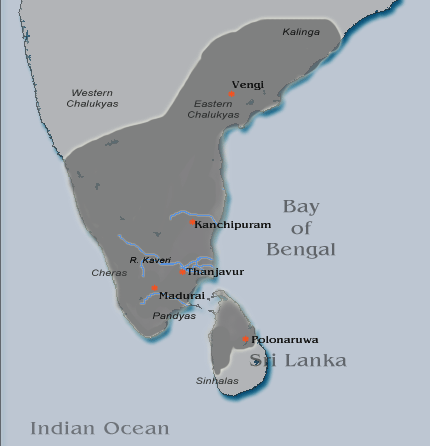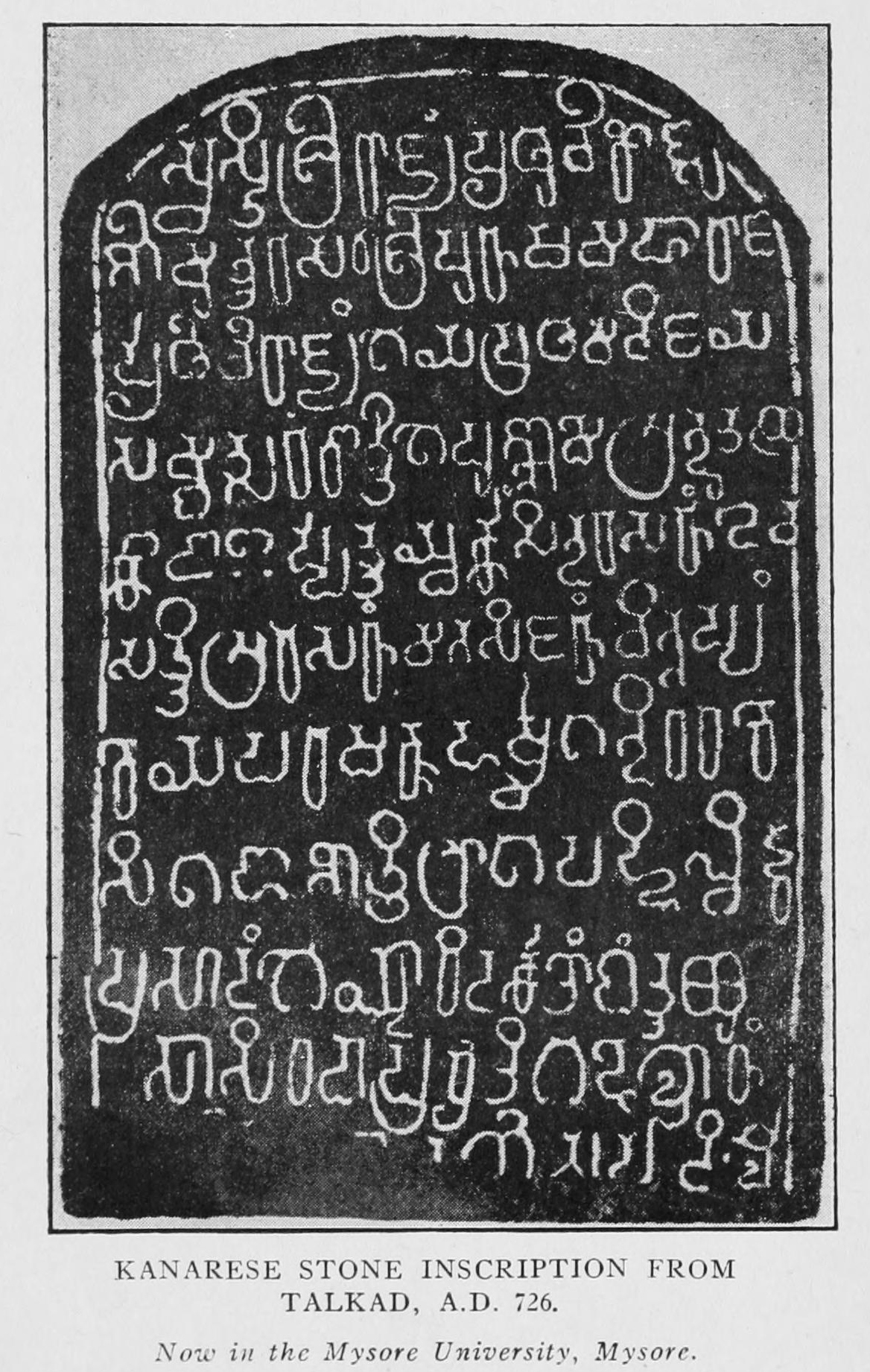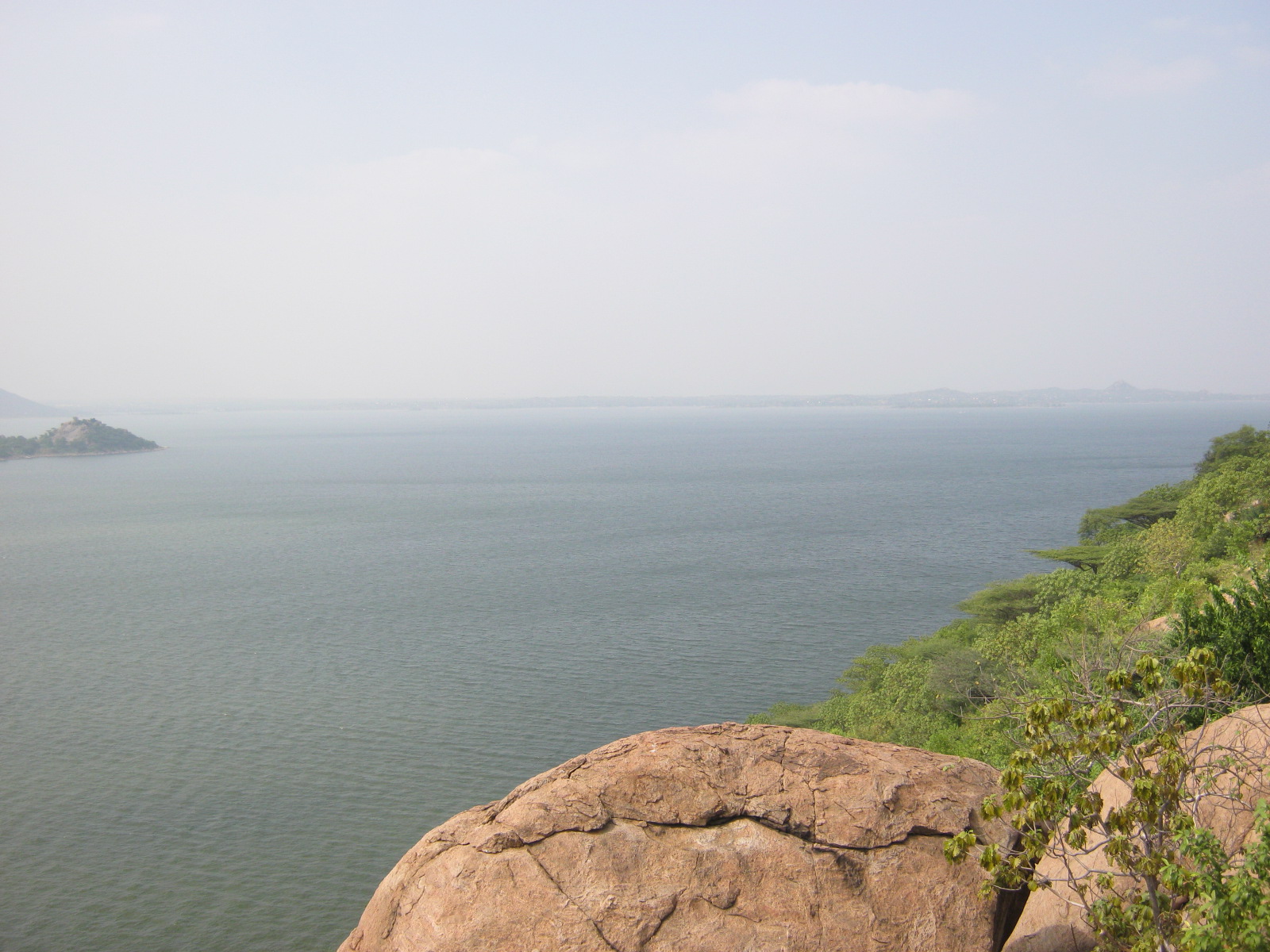|
Meikeerthi
A meikeerthi ( ta, மெய் கீர்த்தி) is the first section of Tamil inscriptions of grant issued by ancient Tamil kings of South India. Meikeerthis of various stone and metal inscriptions serve as important archaeological sources for determining Tamil History. Description ''Meikeerthi'' is a Tamil word meaning "true fame". During the rule of Rajaraja Chola I it became common practice to begin inscriptions of grant with a standard praise for the king's achievements and conquests. This practice was adopted by Raja Raja's descendants and the later Pandya kings. The length of a meikeerthi may vary from a few lines to a few paragraphs. Only the start of a particular king's meikeerthi remains constant in all his inscriptions and the content varies depending upon the year of his reign the inscription was issued (as he might have made new conquests or new grants since the previous inscription was made). Meikeerthis do not mention a calendar year. Instead they always me ... [...More Info...] [...Related Items...] OR: [Wikipedia] [Google] [Baidu] |
Jatavarman Sundara Pandyan
Jatavarman Sundara I, also known as Sadayavarman Sundara Pandyan, was a emperor of the Pandyan dynasty who ruled regions of Tamilakkam (present day South India) between 1250–1268 CE.Sethuraman, p124 He is remembered for his patronage of the arts and tamil architecture, along with refurbishment and decoration of many Kovils (temple) in the Tamil continent. He oversaw a massive economic growth of the Pandyan empire. On the eve of his death in 1268 CE, the second Pandyan empire's power and territorial extent had risen to its zenith. Accession Sundara Pandyan I acceded to the Pandyan throne in the year 1251 CE. During the middle part of the 13th century, Pandya kingdom was ruled by many princes of the royal line. This practice of shared rule with one prince asserting primacy was common in the Pandyan Kingdom. The other princes of the Pandyan royal family with whom Sundara Pandyan I shared his rule were Maravarman Vikkiraman II and his brother Jatavarman Veera Pandyan I.Narasa ... [...More Info...] [...Related Items...] OR: [Wikipedia] [Google] [Baidu] |
Rajaraja Chola I
Rajaraja I (947 CE – 1014 CE), born Arunmozhi Varman or Arulmozhi Varman and often described as Raja Raja the Great or Raja Raja Chozhan was a Chola emperor who reigned from 985 CE to 1014 CE. He was the most powerful Tamil king in South India during his reign and is remembered for reinstating the Chola influence and ensuring its supremacy across the Indian Ocean. His extensive empire included vast regions of the Pandya country, the Chera country and northern Sri Lanka. He also acquired Lakshadweep and Thiladhunmadulu atoll, and part of the northern-most islands of the Maldives in the Indian Ocean. Campaigns against the Western Gangas and the Chalukyas extended the Chola authority as far as the Tungabhadra River. On the eastern coast, he battled with the Chalukyas for the possession of Vengi.A Journey through India's Past by Chandra Mauli Mani p.51 Rajaraja I, being an able administrator, also built the great Rajarajeshwaram Temple at the Chola capital Thanjavur. The ... [...More Info...] [...Related Items...] OR: [Wikipedia] [Google] [Baidu] |
Rajendra Chola I
Rajendra Chola I (; Middle Tamil: Rājēntira Cōḻaṉ; Classical Sanskrit: Rājēndradēva Cōla; Old Malay: ''Raja Suran''; c. 971 CE – 1044 CE), often referred to as Rajendra the Great, and also known as Gangaikonda Chola (Middle Tamil: ''Kaṅkaikoṇṭa Cōḻaṉ''; ), and Kadaram Kondan (Middle Tamil: Kaṭāram koṇṭāṉ ; ) was a Chola Emperor who reigned between 1014 and 1044 CE. He is considered the most significant ruler in early eleventh century South Asia for his role in patronising the arts, encouraging trade and expanding the Chola Empire to is greatest extent . Born in Thanjavur to Rajaraja I and his queen Vanavan Mahadevi, Rajendra first assumed royal power as co-regent with his father in 1012 until the later's death in 1014, after which he ascended the Chola throne in his own right. During his reign, the Chola Empire was the largest and most significant political, military, and economic force is in the Indian subcontinent, and extended its reach ... [...More Info...] [...Related Items...] OR: [Wikipedia] [Google] [Baidu] |
Tamil Language
Tamil (; ' , ) is a Dravidian language natively spoken by the Tamil people of South Asia. Tamil is an official language of the Indian state of Tamil Nadu, the sovereign nations of Sri Lanka and Singapore, and the Indian territory of Puducherry. Tamil is also spoken by significant minorities in the four other South Indian states of Kerala, Karnataka, Andhra Pradesh and Telangana, and the Union Territory of the Andaman and Nicobar Islands. It is also spoken by the Tamil diaspora found in many countries, including Malaysia, Myanmar, South Africa, United Kingdom, United States, Canada, Australia and Mauritius. Tamil is also natively spoken by Sri Lankan Moors. One of 22 scheduled languages in the Constitution of India, Tamil was the first to be classified as a classical language of India. Tamil is one of the longest-surviving classical languages of India.. "Tamil is one of the two longest-surviving classical languages in India" (p. 7). A. K. Ramanujan described it as "the on ... [...More Info...] [...Related Items...] OR: [Wikipedia] [Google] [Baidu] |
Western Ganga Dynasty
Western Ganga was an important ruling dynasty of ancient Karnataka in India which lasted from about 350 to 1000 CE. They are known as "Western Gangas" to distinguish them from the Eastern Gangas who in later centuries ruled over Kalinga (modern Odisha and Northern Andhra Pradesh). The general belief is that the Western Gangas began their rule during a time when multiple native clans asserted their freedom due to the weakening of the Pallava empire in South India, a geo-political event sometimes attributed to the southern conquests of Samudra Gupta. The Western Ganga sovereignty lasted from about 350 to 550 CE, initially ruling from Kolar and later, moving their capital to Talakadu on the banks of the Kaveri River in modern Mysore district. After the rise of the imperial Chalukyas of Badami, the Gangas accepted Chalukya overlordship and fought for the cause of their overlords against the Pallavas of Kanchi. The Chalukyas were replaced by the Rashtrakutas of Manyakheta in 75 ... [...More Info...] [...Related Items...] OR: [Wikipedia] [Google] [Baidu] |
Kaveri
The Kaveri (also known as Cauvery, the anglicized name) is one of the major Indian rivers flowing through the states of Karnataka and Tamil Nadu. The Kaveri river rises at Talakaveri in the Brahmagiri range in the Western Ghats, Kodagu district of the state of Karnataka, at an elevation of 1,341 m above mean sea level and flows for about 800 km before its outfall into the Bay of Bengal. It reaches the sea in Poompuhar in Mayiladuthurai district. It is the third largest river after Godavari and Krishna in southern India, and the largest in the State of Tamil Nadu, which, on its course, bisects the state into north and south. In ancient Tamil literature, the river was also called Ponni (the golden maid, in reference to the fine silt it deposits). The Kaveri is a sacred river to the people of South India and is worshipped as the Goddess Kaveriamma (Mother Cauvery). It is considered to be among the seven holy rivers of India. It is extensively used for agriculture in bo ... [...More Info...] [...Related Items...] OR: [Wikipedia] [Google] [Baidu] |
Kongu Nadu
Kongu Nadu, also known by various names as Kongu Mandalam and Kongu belt, is a geographical region comprising present day parts of western Tamil Nadu, southeastern Karnataka and eastern Kerala. In the ancient Tamilakam, it was the seat of the Chera kings, bounded on the east by Tondai Nadu, on the south-east by Chola Nadu and on the south by Pandya Nadu regions. The region was ruled by the Cheras during Sangam period between c.1st and the 4th centuries CE and it served as the eastern entrance to the Palakkad Gap, the principal trade route between the west coast and Tamil Nadu. The Kosar people mentioned in the second century CE Tamil epic ''Silappathikaram'' and other poems in Sangam literature is associated with the Coimbatore region. The region was located along an ancient Roman trade route that extended from Muziris to Arikamedu.The Gangas of Talakad ruled it for over 5 centuries. The medieval Cholas conquered the region in the 10th century CE. It came under the rule ... [...More Info...] [...Related Items...] OR: [Wikipedia] [Google] [Baidu] |
Shiva
Shiva (; sa, शिव, lit=The Auspicious One, Śiva ), also known as Mahadeva (; ɐɦaːd̪eːʋɐ, or Hara, is one of the principal deities of Hinduism. He is the Supreme Being in Shaivism, one of the major traditions within Hinduism. Shiva is known as "The Destroyer" within the Trimurti, the Hindu trinity which also includes Brahma and Vishnu. In the Shaivite tradition, Shiva is the Supreme Lord who creates, protects and transforms the universe. In the goddess-oriented Shakta tradition, the Supreme Goddess ( Devi) is regarded as the energy and creative power (Shakti) and the equal complementary partner of Shiva. Shiva is one of the five equivalent deities in Panchayatana puja of the Smarta tradition of Hinduism. Shiva has many aspects, benevolent as well as fearsome. In benevolent aspects, he is depicted as an omniscient Yogi who lives an ascetic life on Mount Kailash as well as a householder with his wife Parvati and his three children, Ganesha, Kartikeya and A ... [...More Info...] [...Related Items...] OR: [Wikipedia] [Google] [Baidu] |
Kedah
Kedah (), also known by its honorific Darul Aman (Islam), Aman and historically as Queda, is a States and federal territories of Malaysia, state of Malaysia, located in the northwestern part of Peninsular Malaysia. The state covers a total area of over 9,000 km2, and it consists of the mainland and the Langkawi islands. The mainland has a relatively flat terrain, which is used to grow rice, while Langkawi is an archipelago, most of which are uninhabited islands. Kedah was previously known as Kadaram (; ') by the ancient and medieval Tamils, Kataha or Kalahbar (; ' or ; ') by the Arabs, and ''Syburi'' ( th, ไทรบุรี; ) by the Thai people, Siamese when it was under their influence. To the north, Kedah borders the state of Perlis and shares an international boundary with the Songkhla Province, Songkhla and Yala Province, Yala provinces of Thailand. It borders the states of Perak to the south and Penang to the southwest. The state's capital is Alor Setar and the ... [...More Info...] [...Related Items...] OR: [Wikipedia] [Google] [Baidu] |
Ganges
The Ganges ( ) (in India: Ganga ( ); in Bangladesh: Padma ( )). "The Ganges Basin, known in India as the Ganga and in Bangladesh as the Padma, is an international river to which India, Bangladesh, Nepal and China are the riparian states." is a trans-boundary river of Asia which flows through India and Bangladesh. The river rises in the western Himalayas in the Indian state of Uttarakhand. It flows south and east through the Gangetic plain of North India, receiving the right-bank tributary, the Yamuna, which also rises in the western Indian Himalayas, and several left-bank tributaries from Nepal that account for the bulk of its flow. In West Bengal state, India, a feeder canal taking off from its right bank diverts 50% of its flow southwards, artificially connecting it to the Hooghly river. The Ganges continues into Bangladesh, its name changing to the Padma. It is then joined by the Jamuna, the lower stream of the Brahmaputra, and eventually the Meghna, forming the major ... [...More Info...] [...Related Items...] OR: [Wikipedia] [Google] [Baidu] |
Maldives
Maldives (, ; dv, ދިވެހިރާއްޖެ, translit=Dhivehi Raajje, ), officially the Republic of Maldives ( dv, ދިވެހިރާއްޖޭގެ ޖުމްހޫރިއްޔާ, translit=Dhivehi Raajjeyge Jumhooriyyaa, label=none, ), is an archipelagic state located in South Asia, situated in the Indian Ocean. It lies southwest of Sri Lanka and India, about from the Asian continent's mainland. The chain of atolls of the Maldives, 26 atolls stretches across the equator from Atolls of the Maldives#Ihavandhippolhu, Ihavandhippolhu Atoll in the north to Addu Atoll in the south. Comprising a territory spanning roughly including the sea, land area of all the islands comprises , Maldives is one of the world's most geographically dispersed sovereign states and the List of sovereign states and dependent territories in Asia, smallest Asian country as well as one of the smallest Muslim countries, Muslim-majority countries by land area and, with around 557,751 inhabitants, the 2nd List of Asian ... [...More Info...] [...Related Items...] OR: [Wikipedia] [Google] [Baidu] |








